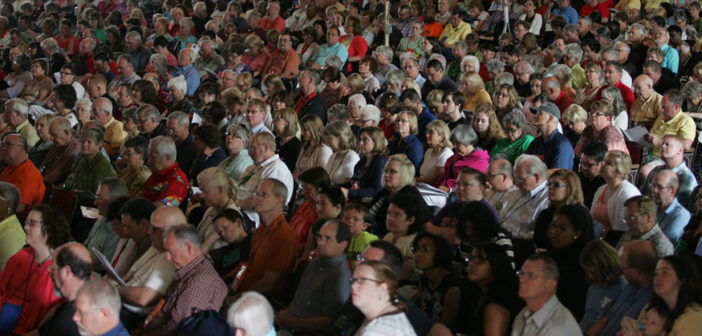When thinking about the appropriate roles for any part of the church, it is important to ask, “What is the ‘calling’ of this unit”? What is it that the entire church looks to this body to do, so that if it does not do it, no one else can or likely will? What are those things that no other group either has the mandate or the ability to do?
The calling of an annual conference is different from that of a congregation. A distinctive task of an annual conference – which no other unit of the church has — is to steward and extend the United Methodist witness within the geographical bounds of the conference.
This United Methodist witness takes seriously that “witness” has many different forms. It represents presence through worshipers in congregations, ministries beyond congregations, partnerships, and public impact. However, since worship and discipleship are the foundation for all ministries, it is not likely that even the finest serving ministries will survive and expand if the church’s efforts to connect people with the love of God in Jesus Christ, expressed through worship, study, and service, continue to decline.
A conference can easily spread attention thinly over a myriad of good interests. In trying to do things for an array of constituents, it may fail to do what only the annual conference can do. Because of this, every annual conference in the United States, even those few that are growing, is drawing down its presence within its borders as the United Methodist percentage of the population decreases. If the beginning point for today’s United Methodist witness is to be consistent with our early American history, that is, starting with the people — all the people God has given us — then this failure either to preserve or extend the United Methodist witness is a betrayal of our tradition and calling.
Enhancing and extending the United Methodist witness within the bounds of the conference is something that, if not done by the annual conference, will not be done by anyone else. This should be a concern not only for conference leaders but all clergy and lay members of the annual conference. When clergy and laity come together for annual conference, some may see their roles as looking out for the interests of their congregations. Not so. That is an appropriate role within the congregation but not within the annual conference. At the annual conference session, clergy and laity are not representatives of congregations but stewards of the mission of the annual conference. Decisions must be made considering their impact on whether they will enhance and extend the United Methodist witness among the people within the borders of the conference. If they are not looking after that mission, no one else in the church will.
Without a “steward” mindset, vast opportunities to advance God’s work are neglected. The populations different from those that make up existing churches have no voice. Those younger than the constituency of annual conference sessions may be forgotten. Places where there is no United Methodist witness, or no effective witness, will have no spokespeople.
Sometimes there are tensions between focusing on new congregations or existing congregations, or between the needs of large membership churches and small membership churches. The focus, instead, must be on how best to enhance and extend the United Methodist witness, which will require new and existing churches as well as large and small churches.
Small churches, for example, must be deeply concerned with what large churches need to be strong, because the ability to enhance and extend the United Methodist witness rests heavily on larger churches. In the same way, large churches must be watchful that small churches have what they need to fulfill their callings because large churches know that they cannot do the ministry now done by the small churches. Each has a stake in the success of others. But without a common destination — a stronger United Methodist witness — the gravitational pull will always be to lesser goals.
A video version of The Calling of the Annual Conference is below.
This article is adapted from Lovett Weems’s book Focus: The Real Challenges That Face the United Methodist Church (Abingdon, 2012), available at Cokesbury and Amazon.




